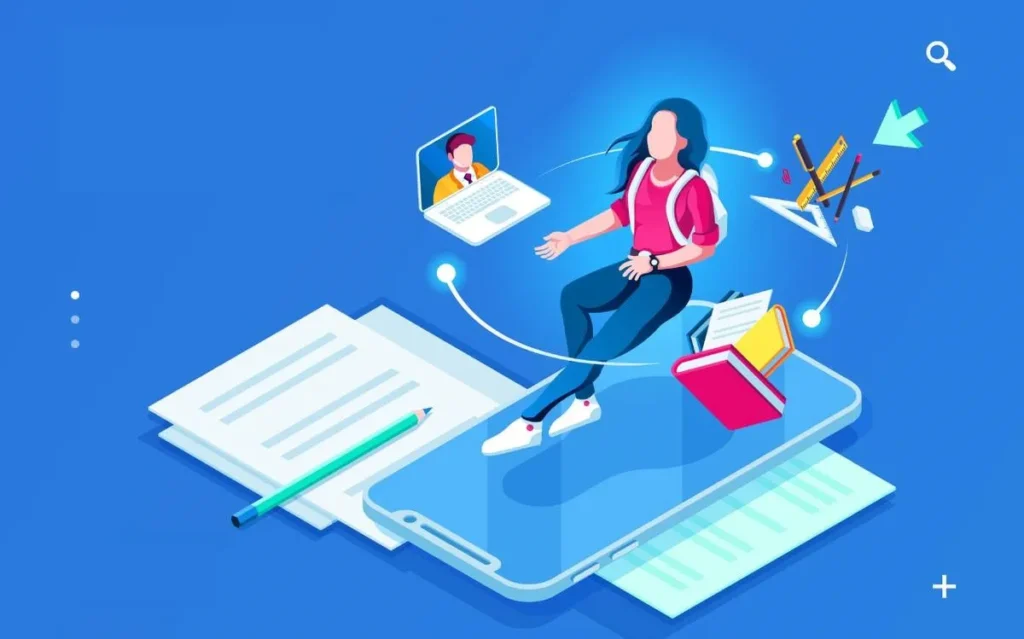Technology affects every portion of our lives but today’s focus is the impact on education. Emerging technologies are changing the relationship between students and teachers, the way students learn, engage with classmates, and even protect themselves on campus.
From kindergarten to college, different technology have been incorporated into education at every level, including computers, iPads, smart boards and more. Students can not only complete the required school from home, but they can also complete an entire college degree without ever stepping foot in a classroom.
Many colleges that still require traditional in-person lectures now require students to submit their assignments online. Lecture has become a supplement to what students can teach themselves from material provided from their teacher online.
However, the real question is: is it effectively teaching students? More importantly, is it teaching students in the most in-depth, but efficient way possible?
Technology is tackling problems that the education system has tried to do for years. This includes the fact that every student learns differently, and it’s impossible for a teacher to conform their lesson plans to each one. The use of digital devices, apps and computer programs in the classroom can allow for more personalized learning. These provide options when it comes to each individual student’s learning pace, strengths and weaknesses, and personal preferences.
According to the U.S. Department of Education, the state of Florida largely supports this idea with the option of Florida Virtual School, an online school that provides K-12 education. District schools have also supported this with the blending of in-person and online school. Credits can now be completed through FLVS during regular school hours.
Technology also encourages education beyond the walls of a school campus. Students now have the ability to work on assignments at home, at any time. This can make it easier for teachers when student don’t finish an assignment in class. They can work on it at home, and if they have questions, students can quickly search a YouTube video to explain.
Educational apps are quickly becoming more popular as parents find them a great way to expose their children to education before the age they can enroll in school, and a bonus, it keeps children distracted. Apps such as “Cupcake” are targeted towards young children to improve their addition and subtraction skills. Kids may not be very interested learning 2 + 2, but they’re likely to be interested in adding how many cupcakes they have.
Apps such as “Ready4 SAT” give older students the ability to prepare for standardized tests at any time, material that parents often pay extra for through courses their student attends outside of school. This app aims to teach the material by testing in mobile-friendly chunks, and it includes test taking tips. Devices with the ability to download educational apps are becoming cheaper, allowing more families to afford them. As technology grows, it’s becoming more common for parents to invest in laptops and iPads knowing it can hinder a child’s education without access to one. Education is now supported 24 hours a day, 7 days a week.
Technology is also improving parental involvement in a child’s education. Many parents work long hours and don’t have the time to visit the classroom or attend scheduled meetings. It’s becoming more common for classes as early as middle school to have a class website. Parents can visit the site and see what their child is working on.
Education has also become more interactive. Students prefer learning through technology because they believe it will be more fun and interesting, according to a study by IT Trade Association CompTIA. Material that students find boring, tempting distraction, can be made more interesting using interactive videos and virtual lessons. Education isn’t about memorizing or regurgitating what a textbook stated, a phenomenon that has become dangerously common. It’s about problem solving and building on knowledge a student already has. Technology can do this by realizing what a student already knows, regardless of what level other students in the class are at, something an instructor cannot quickly determine.
Not only has technology improved education techniques, but it is becoming apparent how important learning these technological skills is before entering the workforce. It’s preparing them for the future. Computer skills currently give job seekers an advantage, but eventually it will be a common factor in all applicants. Therefore, implementing the use of technology in curriculum is inevitable.
Do you have an idea for an educational app? Help students learn these 21stcentury skills and reach out to us to get started developing it. Let MoMo Edutech help bring your idea to life! Contact us at modernizedmobile.com or sales@modernizedmobile.com.
MoMo



